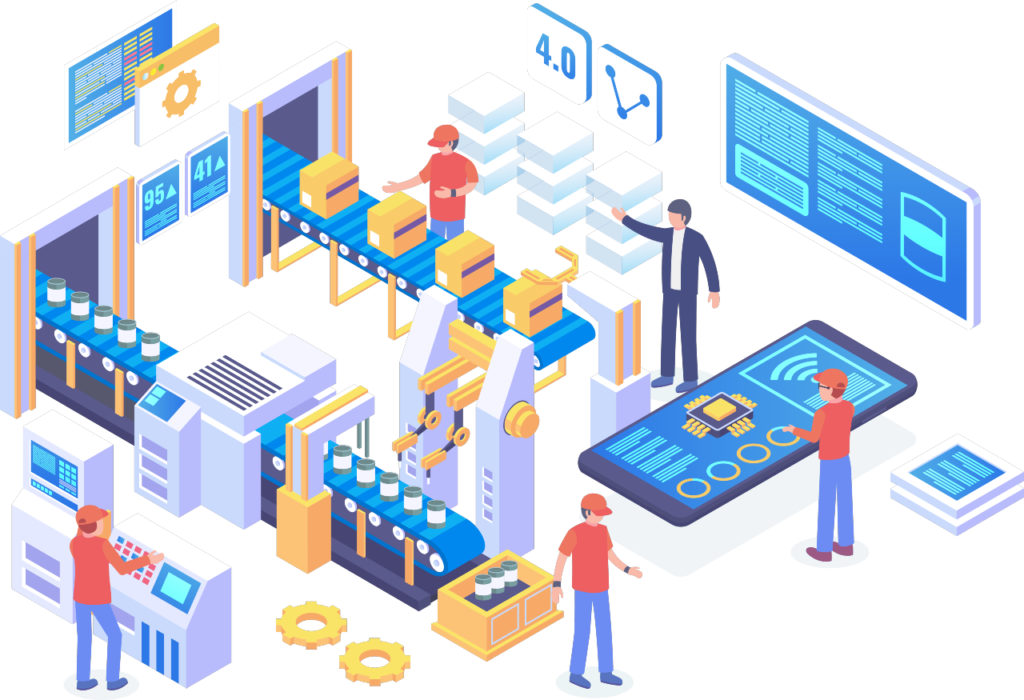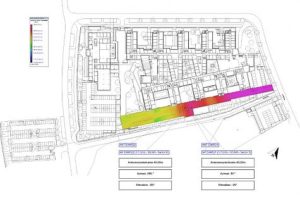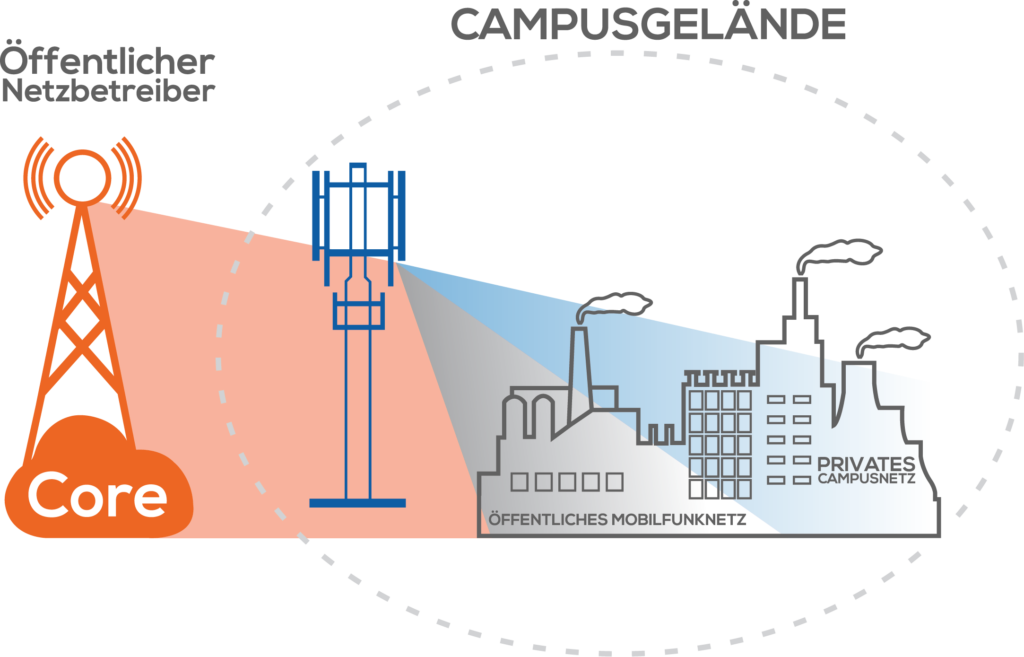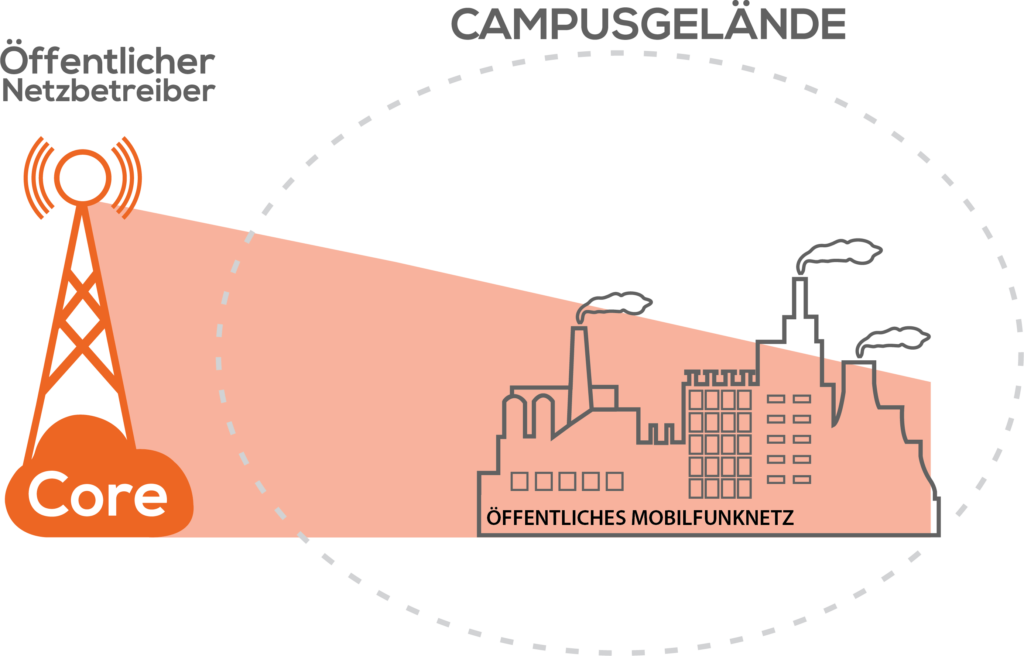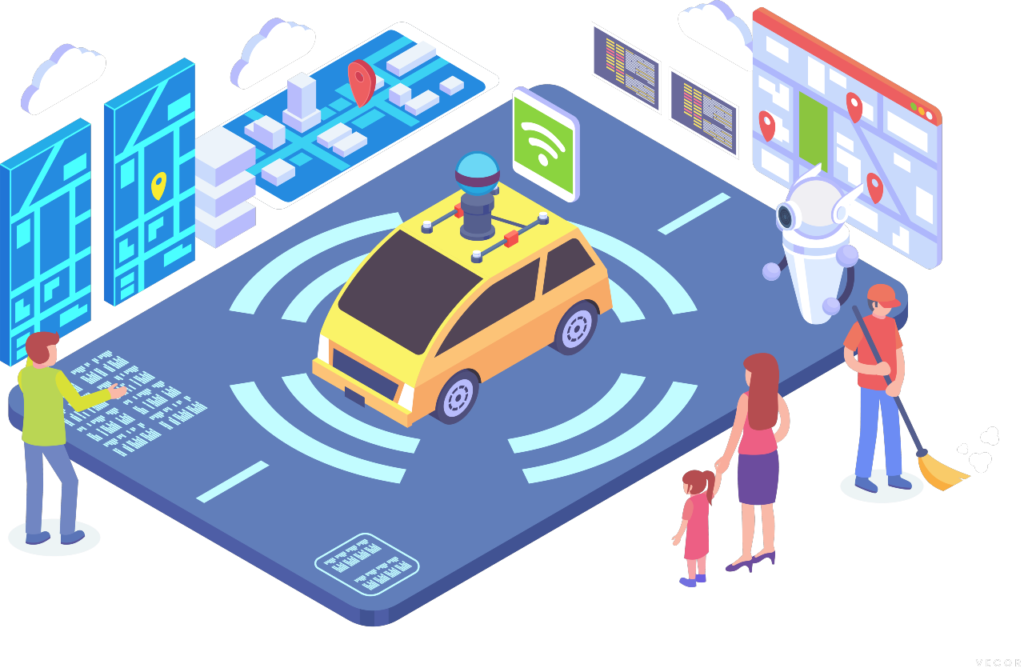First of all, we offer our customers an individual, manufacturer- and network operator-independent consultation on the implementation options for their 5G campus network. For this purpose, we analyse the individual requirements such as required bandwidths, latencies, areas to be covered (indoor/outdoor) and participating end devices resulting from the targeted 5G applications. In addition, an inventory of the existing networks and infrastructures is made and, if necessary, supplementary technologies such as WLAN/WiFi and fibre optics/fibre optics are taken into account for the overall design of your campus network. Finally, a recommendation is made on a suitable operator model.
Once the customer has decided on an operator model, an initial concept is drawn up based on the current status of the existing campus area, including existing infrastructure and networks. Based on this, we develop a rough concept for the antennas and the rough budget for the planning and implementation of your campus network. In the case of a standalone campus network, the conceptual design of the 5G core network is also carried out in cooperation with a partner company.
In the case of a standalone campus network, we take over the entire frequency application process for you. The basis for the frequency application is the previously prepared rough concept including campus areas and antenna locations with parameterised heights, orientation and WGS coordinates. We also calculate the costs for the frequency application and send the application to the Federal Network Agency on your behalf.
To ensure the necessary network quality for your intended 5G applications, a high-availability RF network design is essential. First of all, the building infrastructure is recorded during an on-site structural inspection. In the case of non-standalone networks, we also determine the quality of the existing mobile network with an actual coverage measurement. The iterative design planning and the final implementation planning are then carried out with software support in the iBwave tool in accordance with the network operator standard and the guidelines of the Federal Network Agency. If the 5G core network is also part of the project, the IP and synchronization network planning is also carried out in cooperation with a partner company.
Depending on your individual requirements, we also plan additional existing mobile in-house networks outside the campus area as well as supplementary WLAN or fibre optic networks.
On the basis of the final implementation planning, the realisation of the RF and, if necessary, core network follows. We take over the entire project management for you and, if you wish, either manage your subcontractors or realise the campus network and any other mobile radio, Wifi or fibre optic networks with our own specialists.
